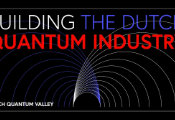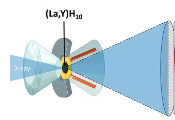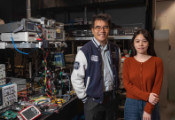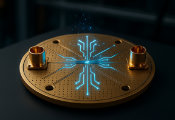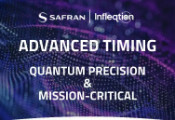Crossing the Quantum Threshold: The Path to 10,000 Qubits
In recent months, several quantum companies have made roadmap announcements with plans to reach 10,000 physical qubits in the next five years or sooner. This is a dramatic increase from the current 20 to 300 qubits, especially given that several of these companies have yet to release their first product.
What makes 10,000 qubits such an important milestone, and what will quantum computers be capable of once that number is reached?
The effort to achieve 10,000 physical qubits in quantum computing is more than a mere pursuit of quantity; it embodies strategic milestones toward unlocking the full potential of quantum computation. Broadly speaking, 10,000 physical qubits allow for the practical realization of over 100 logical qubits, essential for performing longer, more complex computations with a lower chance of errors. Below, I explain the important distinction between physical and logical qubits, the significance of reaching and crossing the 100 logical qubit threshold, and the varied path different quantum computing implementations take to get there.
The Limitations of Physical Qubits
While increasing the number of qubits is good, increasing the qubit quality is even more important. One key attribute of good qubits is the error rates associated with single- and two-qubit operations and the lifetime of a qubit. The error rate indicates how often qubit operations are successful. These might be operations on single qubits, such as flipping a qubit, or operations on two qubits, such as entangling them. The state-of-the-art in two-qubit operations is approaching 99.9% success. While 99.9% might sound great, this success rate implies that about 1 in 1,000 operations fail. Thus, if an algorithm requires several thousands of two-qubit operations, it will likely produce incorrect results. Truly useful algorithms require millions of such operations.
While pursuing 10,000 physical qubits is critical, it’s imperative to acknowledge that effective quantum error correction is necessary since it is unlikely that physical qubit error rates will sufficiently improve to enable these longer, more complex algorithms. This is where logical qubits come in. Logical qubits are a collection of physical qubits that address this problem. By cleverly spreading the information from a single qubit across several qubits, detecting and correcting many errors becomes possible. The exact way to do so and the number of physical qubits that are required to create a good enough logical qubit is an active area of research, but depending on the desired error rate and the selected qubit technology, dozens, hundreds, or thousands of physical qubits will be required to create one good fault-tolerant logical qubit.
Quantum Technologies and the Path to 10,000 Qubits
The transition from noisy, physical qubits to fault-tolerant, logical qubits is not merely technical; it’s transformative, marking the difference between quantum computing as an experimental curiosity and a practical technological powerhouse. The leap toward 10,000 physical qubits is intrinsically aimed at enabling the construction of a significant number of logical qubits, with 100 being a critical milestone for demonstrating practical quantum advantage in various computational tasks.
One reason reaching 100 logical qubits is significant is the simulation limit. When simulating quantum algorithms, classical computers face exponential growth in computational requirements. Today’s most powerful supercomputers can simulate quantum algorithms with about 50 perfect qubits. This is called the simulation limit. Thus, the ability to run algorithms with 100 logical error-corrected qubits would enter an exciting era where quantum computers far exceed the computational capabilities of classical machines while also certifying that the calculation results are accurate. Achieving 100 logical qubits would signify the transition from theoretical or small-scale experimental quantum computing to practical, impactful applications, heralding a new era of computational capabilities.
What could you do with 100 logical qubits?
Imagine a plane with a range of 20 miles. Useful? Not really. Now imagine a plane with a 1,000-mile range. That would be useful for short-haul flights but not for longer trips. A plane with a 10,000-mile range? This is useful for most applications. Similarly, a 100-logical-qubit quantum computer can provide real business value for some applications, such as optimization or machine learning. Larger problems, such as molecular simulations, still require many more logical qubits. Those may require 1,000 logical qubits, while 4,000 logical qubits are expected to be required to crack RSA-2048.
Multiple paths to 10,000 qubits
The journey to 10,000 qubits is navigated through diverse quantum computing technologies, each with unique challenges and advantages:
- Superconducting qubits provide excellent speed, but it appears that reaching 10,000 qubits might require networking dozens of quantum computing cores. Moreover, the fact that each qubit can interact with only a handful of nearby qubits (as opposed to all qubits) leads to less efficient encoding schemes, meaning that a larger number of physical qubits will be required to create each logical qubit. Google and, separately, IBM, demonstrated one or two logical qubits.
- Photonic qubits utilize photons and can theoretically scale very well, but face challenges in efficiently generating, manipulating, and detecting entangled photon states at scale.
- Trapped ion qubits offer superior stability, all-to-all connectivity, and precise qubit control. However, the scalability challenge here involves managing complex ion trap architectures and laser systems as the number of qubits increases. Like superconducting, several trapped ion vendors feel that they need to network multiple units to achieve thousands of qubits. Recent reports from Quantinuum demonstrated two logical qubits with significantly better error rates than the underlying physical qubits.
- Neutral atom qubits are very promising in terms of scale (a recent CalTech group has shown 6,000 trapped qubits) and can provide any-to-any connectivity. Indeed, recent research led by Harvard with QuEra’s participation demonstrated 48 logical qubits. However, questions remain regarding computation speed—the number of calculations that can be performed every second.
Each of these technologies is on a unique path to overcoming their respective challenges, with the collective goal of achieving the scale necessary for practical quantum computing.
In conclusion, the quantum computing industry’s roadmap toward 10,000 physical qubits and thereby achieving over 100 logical qubits encapsulates both the challenges and the transformative potential of quantum computing. While the winning approach is yet to be determined, it appears that we are getting closer and closer to truly useful quantum computers.

